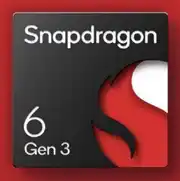Qualcomm Snapdragon 7s Gen 2

Qualcomm Snapdragon 7s Gen 2: Balancing Performance and Affordability in 2025
April 2025
Modern mobile processors are the heart of any smartphone, determining its capabilities. The Qualcomm Snapdragon 7s Gen 2, introduced in 2024, was designed to meet the demands of users seeking the optimal price-to-performance ratio. In this article, we will explore what makes this system-on-chip (SoC) remarkable, who it is suitable for, and what use cases will unveil its potential.
1. Architecture and Manufacturing Process: The Foundation of Stability
8 Cores and 4 nm: Efficiency First
The Snapdragon 7s Gen 2 is built on a 4-nanometer manufacturing process, ensuring high energy efficiency. The CPU architecture includes 8 cores divided into two groups:
- 4 high-performance Cortex-A78 cores with a frequency of up to 2.4 GHz for resource-intensive tasks;
- 4 energy-efficient Cortex-A55 cores with a frequency of 1.8 GHz for background processes.
This approach allows for flexible load distribution: for example, when launching a game, the powerful cores are activated, while energy-saving cores run in music playback mode. This reduces heating and extends battery life.
Adreno 710: Graphics for Comfortable Gaming
The Adreno 710 GPU supports resolutions up to QHD+ (1440p) and a refresh rate of 120 Hz. It is optimized for Vulkan API and OpenGL ES 3.2, making it suitable for mobile games like Genshin Impact at medium settings. However, it may lack the power for ultra-settings in AAA titles of 2025.
4 nm Technology: Less Heat, More Working Time
Thanks to the 4-nanometer process, the chip consumes 15% less energy than the previous generation (Snapdragon 7 Gen 1, 6 nm). This is especially noticeable in scenarios involving prolonged camera usage or video streaming.
2. Performance in Real Tasks
Gaming: Balancing Quality and FPS
The Snapdragon 7s Gen 2 demonstrates stable 40-50 FPS in Honkai: Star Rail (High settings) and up to 60 FPS in Call of Duty: Mobile (Medium settings). However, in games with ray tracing, such as Fortnite (mobile version), the frame rate drops to 30 FPS. For comfortable gaming, developers recommend activating the "Graphics Power Saving" mode in the smartphone settings.
Multimedia: Smooth Streaming and HDR
The chip supports video decoding in HDR10+ and Dolby Vision formats, making it ideal for viewing content on OLED screens. Tests show that streaming 4K video on Netflix consumes 20% less battery than competitors like the MediaTek Dimensity 8300.
AI Applications: Accelerating Neural Networks
The integrated Hexagon 710 AI engine accelerates machine learning applications: for instance, photo processing in Google Photos or offline speech recognition. However, for complex tasks like image generation in Stable Diffusion, the processor lacks the necessary power — here it falls short compared to the flagship Snapdragon 8 Gen 3.
Power Consumption and Heating
In mixed-use mode (social networking, navigation, calls), smartphones with the Snapdragon 7s Gen 2 can last up to 14 hours. With active gaming, the time reduces to 4-5 hours. The cooling system in devices based on this chip is typically passive (heat pipes), which prevents throttling even during long sessions.
3. Integrated Modules: The Future of Connectivity
5G and Wi-Fi 7: Speed Without Compromises
The integrated Snapdragon X62 modem supports 5G mmWave and Sub-6GHz networks with a peak speed of up to 4.4 Gbit/s. For most users, this is more than sufficient even in congested networks.
Wi-Fi 7 guarantees speeds of up to 5.8 Gbit/s, and Bluetooth 5.3 with LE Audio support allows for connecting multiple devices without latency — for example, wireless headphones and smartwatches simultaneously.
Satellite Navigation: Accuracy to Within a Meter
The chip supports GPS, GLONASS, Galileo, and BeiDou systems, along with the latest Dual-Frequency GNSS standard. This increases positioning accuracy to within 1 meter, which is critical for navigation in cities with high buildings.
4. Comparison with Competitors
Snapdragon 7s Gen 2 vs MediaTek Dimensity 8300
- CPU Performance: Snapdragon excels in single-threaded tasks (Geekbench 6 Single Core: 1017 vs. 950 for MediaTek), but lags in multi-threaded (Geekbench 6 Multi Core: 2954 vs. 3100).
- Graphics: Adreno 710 is about 10% weaker than Mali-G610 MP6 in Dimensity 8300.
- Energy Efficiency: Snapdragon is more economical under average load (difference of up to 8%).
Snapdragon 7s Gen 2 vs Previous Generation (7 Gen 1)
- CPU Performance Increase: +12% in single-threaded tests;
- Adreno 710 GPU is 18% faster than Adreno 644;
- Support for Wi-Fi 7 compared to Wi-Fi 6E in its predecessor.
Price Category
Smartphones with Snapdragon 7s Gen 2 range from $350-500, while devices with Dimensity 8300 cost between $400-550. This makes Qualcomm's chip a profitable choice for the budget segment.
5. Use Cases
Gaming
The processor is suitable for casual games (Candy Crush, Among Us) and medium settings in hardcore projects. For maximum FPS, it is advisable to choose models with active cooling, such as the POCO X6 Pro (price: $399).
Daily Tasks
Social networking, browsing, and streaming are all performed without delays. Multitasking (with over 10 tabs open in Chrome) also poses no challenges.
Photo and Video
The ISP Spectra 350 supports cameras up to 200 MP and 4K@60fps recording. Features like night mode or HDR shooting are processed in 0.8 seconds, comparable to flagship devices of 2023. However, for professional shooting in RAW+JPEG, it is better to select the Snapdragon 8 Gen 3.
6. Pros and Cons
Strengths:
- High energy efficiency;
- Support for Wi-Fi 7 and 5G;
- Affordable device prices;
- Fast charging (up to 100% in 45 minutes with QC5+).
Weaknesses:
- Limited performance in demanding games;
- Lack of hardware acceleration for generative AI;
- Maximum refresh rate of 120 Hz (competitors offer 144 Hz).
7. Practical Tips for Choosing a Smartphone
1. Cooling: Look for models with vapor chamber or liquid cooling if you plan to game.
2. RAM: A minimum of 8 GB LPDDR5 will ensure smooth multitasking.
3. Display: AMOLED with a refresh rate of 90-120 Hz will unleash Adreno 710's potential.
4. Budget: Devices priced under $450 often compromise on camera or display — check reviews before making a purchase.
Typical Devices:
- Mid-range: Xiaomi Redmi Note 13 Pro ($379), realme 11 Pro+ ($429);
- Premium-budget: Motorola Edge 40 Neo ($499).
8. Final Conclusion
The Snapdragon 7s Gen 2 is a successful compromise for those who are not willing to overpay for flagship chips but want stable performance in everyday tasks and moderate gaming. The main advantages include:
- Long battery life thanks to the 4 nm manufacturing process;
- Future-proof communication modules (5G, Wi-Fi 7);
- Affordable smartphone prices.
This processor is ideal for students, travelers, and anyone who values a balance between price and quality. If you are not a demanding gamer or photographer, the Snapdragon 7s Gen 2 will be a reliable companion for the next 2-3 years.
Basic
4x 1.95 GHz – Cortex-A55
GPU Specifications
Connectivity
Memory Specifications
Miscellaneous
Benchmarks
Phones with Snapdragon 7s Gen 2
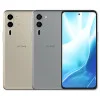

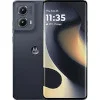


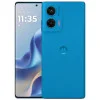
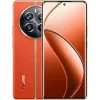
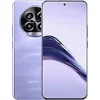
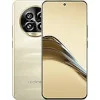


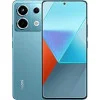
Tablets with Snapdragon 7s Gen 2
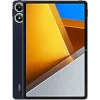
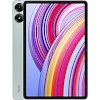
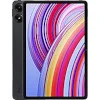
Comparison of Devices with Snapdragon 7s Gen 2
Compared to Other SoC
Related SoC Comparisons
Share in social media
Or Link To Us
<a href="https://cputronic.com/soc/qualcomm-snapdragon-7s-gen-2" target="_blank">Qualcomm Snapdragon 7s Gen 2</a>


